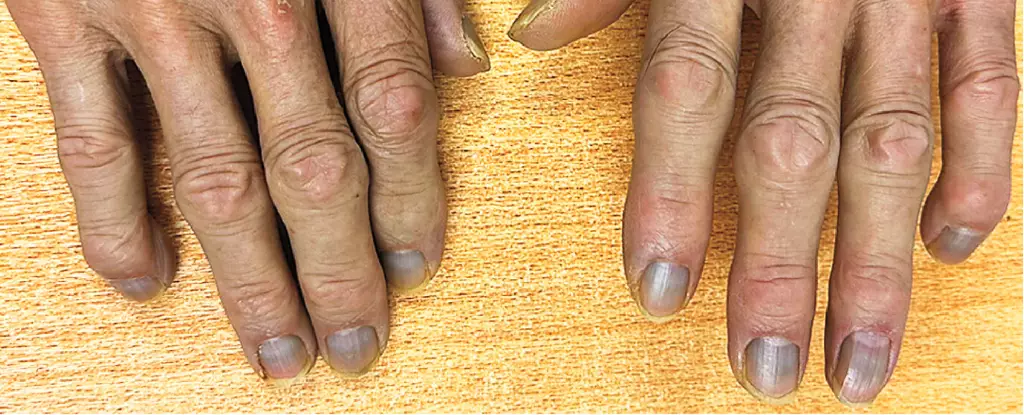In the bustling medical landscape of Hong Kong, clinicians often encounter perplexing cases that challenge the boundaries of common medical knowledge. One such case involved an 84-year-old man presenting with urinary flow obstruction, but drawing attention away from his primary complaint was a striking manifestation—he exhibited pronounced grayness in his skin, eyes, and nails. This unusual pigmentation was a significant deviation from the norm, raising questions about its origins, potential implications, and treatment options.
Upon administration of blood tests, the medical team was greeted with a surprising revelation: the man’s body was heavily saturated with silver, with concentrations exceeding 40 times the average levels typically found in humans. This systemic accumulation had manifested in a condition known as argyria, characterized by the deposition of silver in various tissues, particularly affecting the skin, sweat glands, and blood vessels. The man’s condition is a potent reminder of how certain metals can adversely interact with human physiology, often leading to unexpected and unusual health complications.
Argyria itself, while uncommon, is a documented phenomenon. Historically, it has been linked to individuals working with silver or silver-containing products. Artisans and miners were particularly vulnerable due to their prolonged exposure to silver particles. In contemporary times, however, the condition has also been associated with the misuse of colloidal silver, a popular yet unsubstantiated remedy touted for its supposed health benefits. Despite the FDA’s warnings regarding its safety and efficacy, colloidal silver continues to find a marketplace, often marketed as a dietary supplement and a detoxifying agent.
The physiological mechanisms behind silver accumulation are intriguing. Silver enters the body mainly through inhalation, dermal absorption, or ingestion. Once inside, it becomes distributed throughout the body, and under certain conditions—especially when exposed to ultraviolet light—silver ions can precipitate into oxidized particles, resulting in the characteristic gray or blue pigmentation associated with argyria. These processes underscore the pivotal role that environmental exposure and lifestyle choices play in the development of such atypical conditions.
Interestingly enough, in the case of the 84-year-old man, health professionals were unable to pinpoint a definitive source for his significant silver saturation. His long career as a waiter provided no direct link to occupational exposure, nor did any of his neighbors exhibit similar skin changes, making involuntary environmental exposure seem implausible. This conundrum raises further questions about the unpredictable nature of heavy metal accumulation in individuals and the challenges involved in tracing its origin.
The Impact of Argyria on Health
Despite the striking cosmetic effects of argyria, medical experts noted that the condition is not fundamentally detrimental to overall health. At the concentrations noted in this patient, silver buildup was not expected to cause significant long-term health issues. Notably, while silver can potentially interfere with the metabolism of certain medications, such as antibiotics and theroid hormones, the clinical implications for the patient remained relatively benign.
However, it is important to highlight that the cultural and psychological aspects of living with a noticeable change in skin tone can carry significant emotional weight. Individuals diagnosed with argyria may grapple with feelings of embarrassment or self-consciousness, complicating their overall well-being beyond mere physical health.
Looking Ahead: Monitoring and Managing Argyria
In the absence of any known treatment to reverse silver accumulation, individuals diagnosed with argyria face a unique challenge. For the man in question, his future will entail regular monitoring of his condition, particularly regarding his silver levels. The continued vigilance by healthcare providers is essential, not only to assess the stability of his condition but to address any potential complications that may arise due to silver’s lingering presence in his system.
As advancements in medical research continue to unfold, cases like that of this patient remind us of the importance of thorough investigation and holistic care in medicine. The interplay between environmental factors, lifestyle choices, and health outcomes remains a critical area of exploration, one that healthcare professionals must navigate with diligence and compassion. The mystery of how silver found its way into his body may remain unresolved for now, but this case serves as an educational platform for clinicians and patients alike, urging continued discussion about the implications of heavy metals within our world today.

